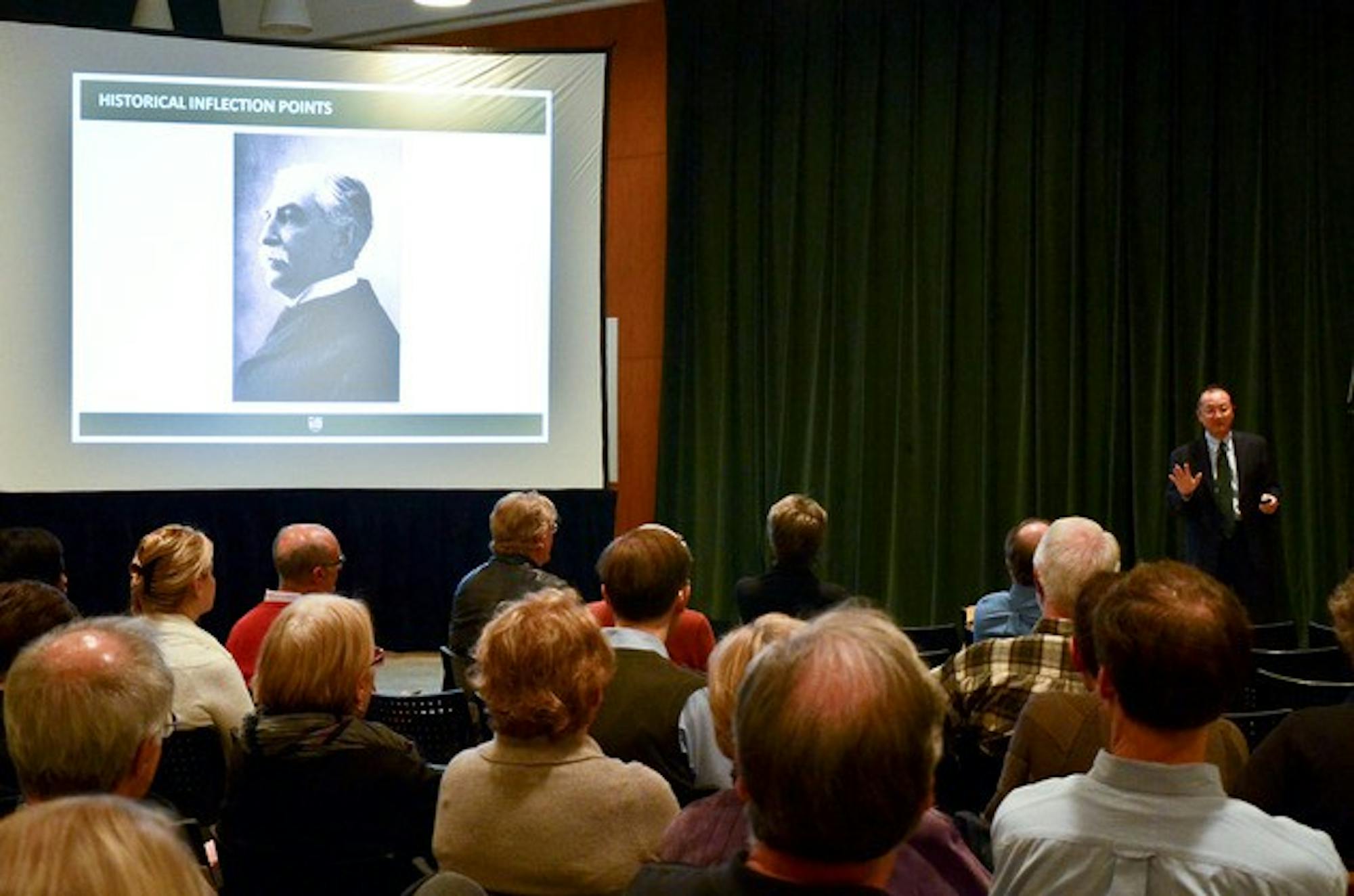The College does not necessarily need a monumental shift in values, but does need to stay on the cutting edge of higher education trends, according to Kim. "Strategic planning doesn't mean we have to do something new, but we have to make it better," Kim said. "We need big ideas."
Kim emphasized the College's need to build on Dartmouth's strong institutional foundations and publicize its improvements in order to maintain Dartmouth's prestigious reputation. "If you look at institutions that have been successful recently, like [New York University] or [University of Southern California], they're not just saying, We're good,' but they're making changes and then announcing it," Kim said. "We have to find areas where we're already good, make investments in these places that are signature strengths, and then announce it."
Kim showed a graph demonstrating the large discrepancy between Dartmouth's national and international rankings. While Dartmouth was ranked high by U.S. News and World Report's metrics earning an 11th-place spot on the magazine's "best university" list in September Dartmouth was ranked 99th by the QS World University Rankings and 90th in the Times Higher Education World University Rankings. Other Ivy League universities remained competitive on the international scale. Harvard University maintained the number two spot on both international lists. "We know we should be here," Kim said, pointing to the top right of the graph. "But why does the rest of the world think we're down here?" In the discussion following Kim's address, Provost Carol Folt said there is a "complicated set of reasons" for the gap between Dartmouth's national and international rankings. Two of the major contributing factors are Dartmouth's lack of a "university" title and Dartmouth's focus on undergraduates, both of which have hurt Dartmouth's international reputation. The "rising prestige of global and U.S. public universities" is a threat to Dartmouth's traditional role as a top university, Kim said. Pennsylvania State University's Schreyer Honors College, for example, is asserting itself as a competitor to Ivy League universities. This is an especially vulnerable time for private institutions, as many state universities are questioning why private universities that invest in private equities should be tax-exempt, Kim said.
Dartmouth will continue to monitor peer universities' changes, including increasing tuition prices, growth in low-cost pre-professional options and online learning, increased division between research and teaching institutions, and an "arms race" in facilities, courses and international programs.
In the brief discussion following the address, faculty members cited infrastructure for publicizing faculty research and metrics for assessing student learning as two areas that require improvements. Budget issues, the focus of the Oct. 24 Faculty of Arts and Sciences meeting, were not mentioned by faculty members in attendance, although Kim began the meeting by briefly summarizing the College's current financial situation. Although large-scale changes may be necessary in the next decade, alumni must see new developments as part of an institutional history of adaptation rather than as a threat to tradition, Kim said. "I have to understand the history of the institution better than those individuals who might want to bring us backward," Kim said. "We're now at another inflection point, but it's not a radical inflection point. It is actually in the great tradition of Dartmouth College." Kim summarized important changes that the College has made during its history, explaining that former College President William Jewett Tucker made Dartmouth a modern institution by introducing a scientific curriculum, former College President John Sloan Dickey changed the character of the faculty by emphasizing advanced degrees and research, and former College President John George Kemeny worked to increase the number of female and minority students at the College. These presidents' contributions demonstrate that Dartmouth is constantly evolving in a positive manner, according to Kim.
The General Faculty is composed of the Faculty of Arts and Sciences, as well as the faculties of the Tuck School of Business, the Thayer School of Engineering and Dartmouth Medical School.




